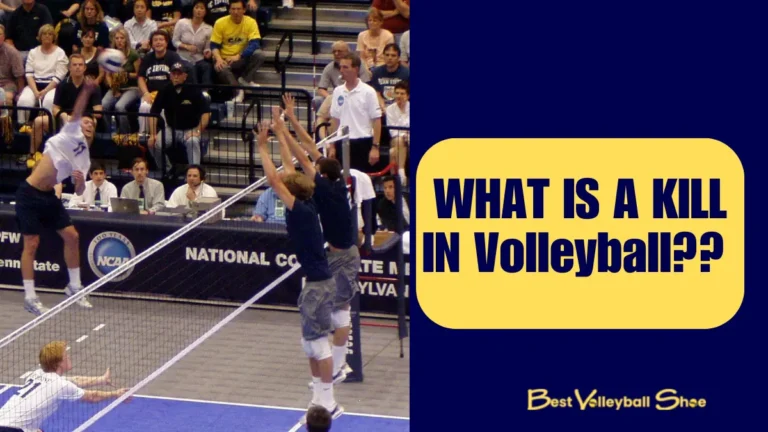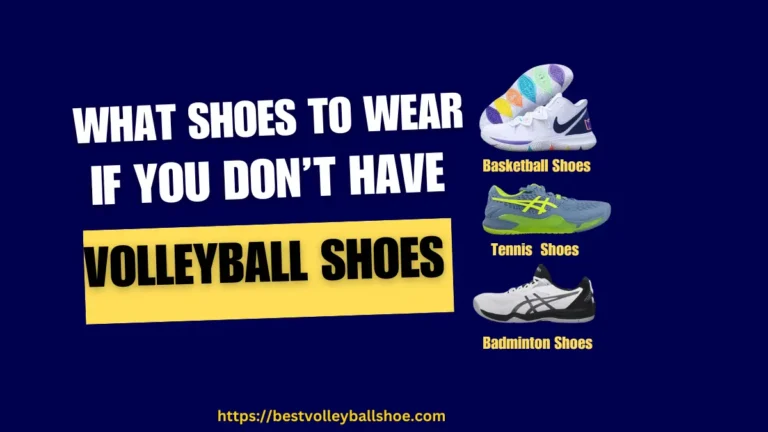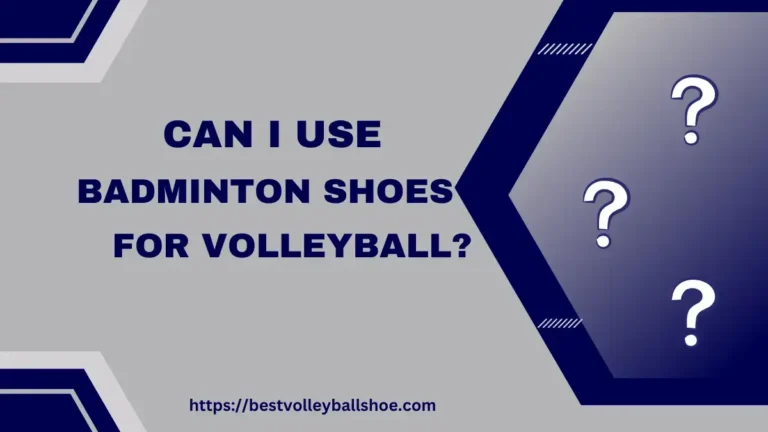How to Spike a Volleyball – A Guide For Beginners
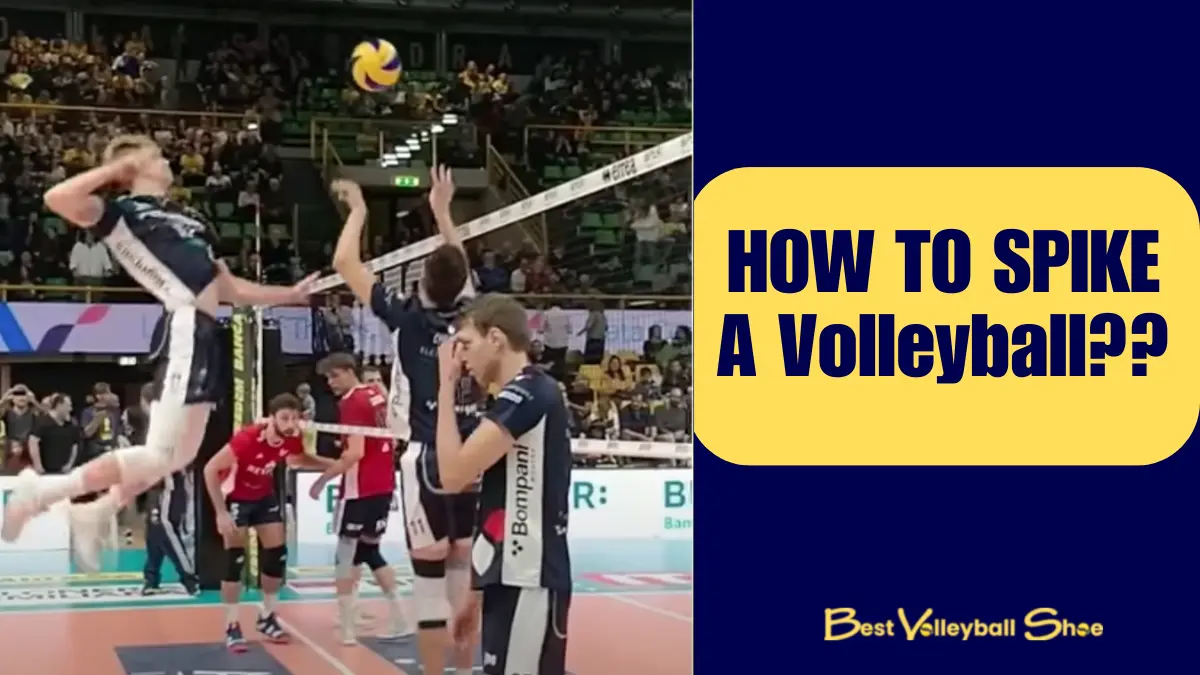
Every game has some tricks a player can learn to win. If I talk about the volleyball game, spiking is the one thing that can help you push the other team off the court if you do it well.
You might be thinking, “How to spike a volleyball?” If I tell you in short, it’s a move where you use full power and jump to hit the volleyball so hard that it falls on the other team’s ground, and you win. If the other team can return your spike, the game could go in their favor, too.
Learning and getting good at spiking usually takes a lot of time, but you can get better at it by focusing on proper coaching, practice, and techniques.
If you don’t know how to position yourself, swing your arms, hit the ball with an open hand, and many other tips, let’s discuss it in detail.
How to Spike a Volleyball? 11-Steps Guide
Spiking a volleyball can be exciting and scary for people just starting. No matter how old you are, everyone follows the same simple steps. Here’s what you need to do:
1. Finding Your Spot
Take your place at the front to hit the ball over the net. The best place to hit is from the right or left side, so the ball goes down at a sharp angle.
Stay about four steps back from the net, behind the attack line. If you have long legs or can jump high, you can stand further back or in the middle.
2. Watching the Setter
Keep your eyes on the setter, who will toss the ball up high and close to the net, making it easy for you to spike. Once the ball is set, that’s your cue to start moving. Practice with a good setter who can put the ball in the right spot. Tell your team you will hit by using a special code word.
3. Getting Ready to Move
Turn your body to face the ball and bend your knees. If you’re right-handed, step your left foot backward. If you’re left-handed, do the opposite.
4. Taking Your First Step
If you’re right-handed, step towards the ball with your left foot first. If you’re left-handed, use your right foot first.
5. Taking a Big Second Step
Next, take a big step with your other foot to go faster. While you do this, swing your arms behind you to get ready to hit the ball. Take a bigger step if the ball is far away or a smaller step if it’s closer.
6. Final Step
Take one last step with the same foot as your first step. Ensure your feet are a shoulder’s width apart, and your knees are bent. Your arms should be back behind you. A good arm swing will help you jump higher. Remember to keep your head up to watch the ball.
7. Jumping and Getting Ready to Hit
As you finish your last step, turn your body away from the net. Leap as high as possible and swing your arms forward simultaneously. The higher you jump, the harder you’ll be able to hit the ball.
8. Pulling Your Arm Back
When you reach the top of your jump, raise your arms over your head. Curve your hitting arm at the elbow, bringing your hand close to your head.
9. Hitting the Ball
If you want the ball to hit perfectly, try the following strategies:
10. Landing Safely
When your feet hit the ground, bend your knees to avoid getting hurt. Be careful not to get caught in the net.
11. Getting Ready for the Next Play
You need to be ready if the other team hits the ball back. Take a step back from the net and get in your ready position. Always remember to watch the ball closely.
The more you practice spiking, the easier and more comfortable it will become. Just remember to concentrate on your technique and aim for a spot on the other team’s side that’s tricky for them to defend.
You may watch Coach Donny videos for a practical demonstration of the spiking
How to Make the Perfect Spike – Know the Secrets
Spiking is a powerful offensive move that can help you dominate the court. With the right technique and practice, you’ll be spiking like a pro in no time. Let’s see how to make the perfect spike!
Hit the Ball at a Steep Angle
You want to hit the ball at a sharp angle down towards the floor to make your spike more powerful and hard to return. That way, your opponent won’t have much time to react.
Once you’ve got the right form down, hit the ball at a steep angle. Take up open spots on the court where it’s tough for your opponents to reach the ball.
Watch Out for Blockers
Blockers are the players on the other team who try to stop your spike from getting over the net. Even if you hit the ball hard, you probably won’t score a point if it goes right into a blocker.
As you watch the ball, try to see out of the corners of your eyes to know where the blockers are so you can evade them.
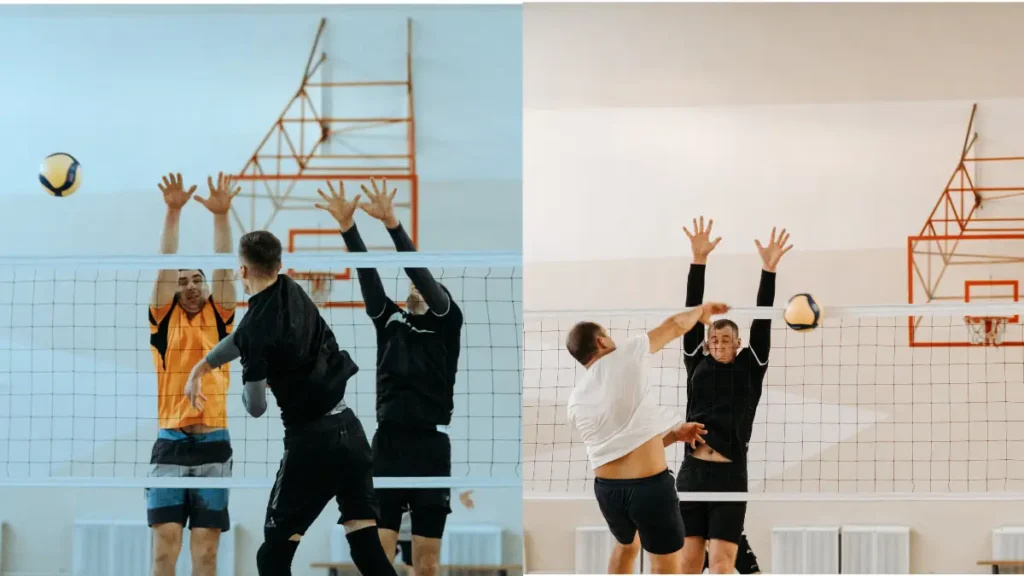
Surprise Your Opponents with Quick Moves
If you move slowly and gracefully toward the ball, your opponents will have plenty of time to get ready to block your spike. Instead, move fast and suddenly to surprise them and have a better chance of scoring.
Work with Your Teammates
Many volleyball teams use special words, positioning, and other strategies to trick their opponents. Doing things to distract or confuse the other team before you spike can help create an opening on their side of the court for you to score. Check out some guides on volleyball strategy to learn more about how to beat a tough opposing team
How Short Players Can Be Great Volleyball Spikers
Short players can be great at spiking a volleyball, even against taller players. If you want to be one of these strong hitters, think about these tips:
Many short players give up on being hitters and get put in spots they don’t like. While you might have to play a different role, you can always improve your attack, and maybe you’ll get the spot you want the Outside Hitter!
How to Get Better at Spiking a Volleyball by Yourself
You can get better at spiking a volleyball independently, even though you usually practice with a team. It might be hard to know what to do, but with the right tools, you can do a lot to make your skills better all by yourself.
Try a Ball Machine or Launcher
Start practicing spiking alone using a ball machine or launcher. You can set these machines to throw the ball differently so you can work on your approach and hit.
Use a Rebounder
A rebounder is a tool that lets you hit the ball and have it bounce back to you. This is a great way to practice spiking yourself because you can focus on your approach, hit, and follow through without chasing the ball.
Use a Solo Trainer or Self-practice Setter
A self-practice setter helps you set the ball for yourself to practice hitting. It’s useful if you want to improve your hitting technique.
Techniques and Strategies for Optimal Performance
Mastering the art of spiking requires a combination of techniques and strategies. By understanding the key elements of a successful spike, you can optimize your performance on the court.
From approach and timing to arm swing and follow-through, every detail matters. Let’s explore the techniques and strategies for optimal spiking performance!
Develop a Natural Arm Swing
A proper arm swing is essential for generating power and maintaining shoulder health in volleyball.
To deceive the throwing motion, raise your non-hitting hand high and keep your hitting elbow elevated throughout the swing. This “bow and arrow” concept helps visualize the proper technique.
To develop a natural arm swing, practice regularly while focusing on keeping hands and elbows high and engaging your core muscles. Consistency and dedication to proper form will help you achieve optimal results on the volleyball court.
Perfecting Your Approach Footwork
Proper approach footwork is crucial for executing successful attacks in volleyball. The four-step approach is the most common and recommended technique, with the sequence of steps depending on your dominant hand.
Right-handed players use a right, left, right/left sequence, while left-handed players use a left, right, left/right sequence.
Creating distance from the net is essential to generate momentum and keep the ball in front of you during your approach.
By mastering your approach footwork and incorporating these techniques into your training, you can optimize your attacking game and elevate your performance on the court.
Mastering Approach Timing
To master approach timing in volleyball, focus on speed progression and step distance. Start slowly and gradually increase speed, finishing explosively.
- Begin with small steps for adjustments, progress to larger strides, and take the biggest steps in your final two for momentum and height.
- After passing, wait for the setter’s touch to initiate your approach. Maintain a calm pace in your first two steps before exploding into your final steps.
- Synchronize your approach with the setter’s touch for optimal timing.
Proper Loading and Swinging
After completing your approach and jumping, it’s time to execute the bow and arrow motion and swing through the ball. This technique will help you generate power, velocity, and attack accuracy.
- To master loading and swinging in volleyball, set up the bow and arrow position after approaching and jumping.
- Swing through using the throwing motion, finishing with a wrist snap for velocity and accuracy.
- Focus on hitting the ball quickly, not hard, by avoiding the “crunching” motion and surprising the ball with an earlier contact.
This technique increases power while maintaining height and precision. Practice and repetition will help you generate powerful, accurate attacks that keep your opponents on their toes.
Optimizing Your Attack Corridor
After mastering your approach spacing, timing, and arm swing, it’s crucial to understand how to position yourself for optimal attacking opportunities. This advanced concept involves finding your attack corridor, allowing you to hit cross-court and down-the-line shots without telegraphing your intentions. Its techniques are the following:
- Proactively position yourself before your approach instead of chasing after the ball.
- Create or reduce space between you and the setter to keep the ball on your hitting shoulder:
- Put right-handed players on the left and left-handed on the right to make a narrow area like a funnel.
- Make left-handed players stay on the left side and right-handed on the right side to shorten the distance.
- Regardless of your side, you must find your optimal attack corridor.
- An optimal attack corridor allows you to hit cross-court and down-the-line shots without telegraphing your intentions.
You’ll often notice right-handed players on the left and left-handed on the right because that’s how they naturally move. But remember, no matter which side you’re on, it’s up to you to find the best way to attack.
Final Note
To Sum up, you got the answer of how to spike a volleyball and see it is an important skill that requires a lot of practice, technique, and strategy. According to my more than decades-old experience as a volleyball player, follow the steps I discussed, like getting into the correct position, timing your approach, jumping explosively, and striking the ball with power and accuracy. You can be a really good hitter on your team.
Remember to work with your teammates, watch out for blockers, and aim for the holes in your opponent’s defense to maximize your chances of making a kill.
Frequently Asked Questions
How many types of spikes are in volleyball?
There are three main ways to hit the ball hard over the net in volleyball:
- Cross-body spike: Swing your arm to the other side after hitting the ball.
- Straight-ahead spike: Swing your arm straight ahead on the same side of your body after hitting the ball.
- Off-speed roll shot: Gently hit the ball across your body to the other side, making it go slower than a regular spike.
What is a spike in volleyball?
A spike is when you hit the volleyball hard down onto the other team’s side of the court. You run up to the net, jump high, and smack the ball down fast so the other team can’t hit it back.
How do you spike a volleyball hand position?
Focus on your hand position during the arm swing to maximize spiking power. Begin with a “Nike sign” or “Loaded position,” then rotate your hips and shoulders while keeping your elbow high and close to your ear. Extend your elbow and snap your wrist upon contact for optimal power and control.



